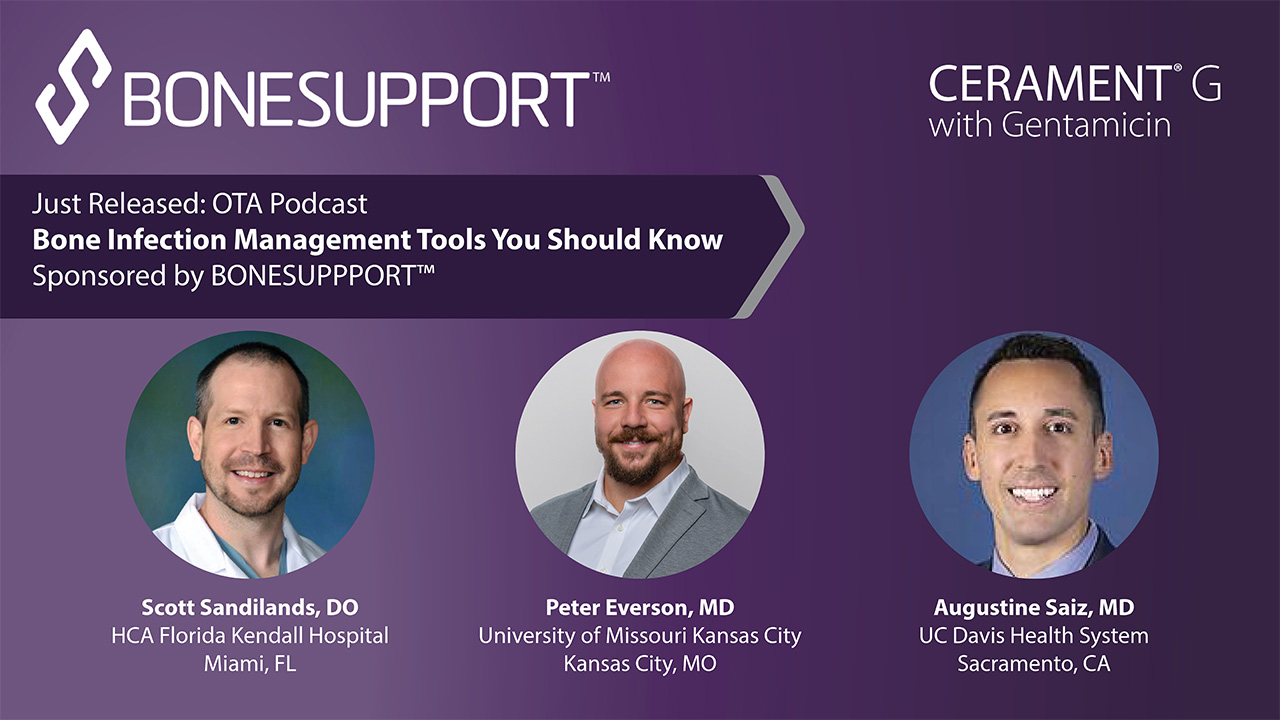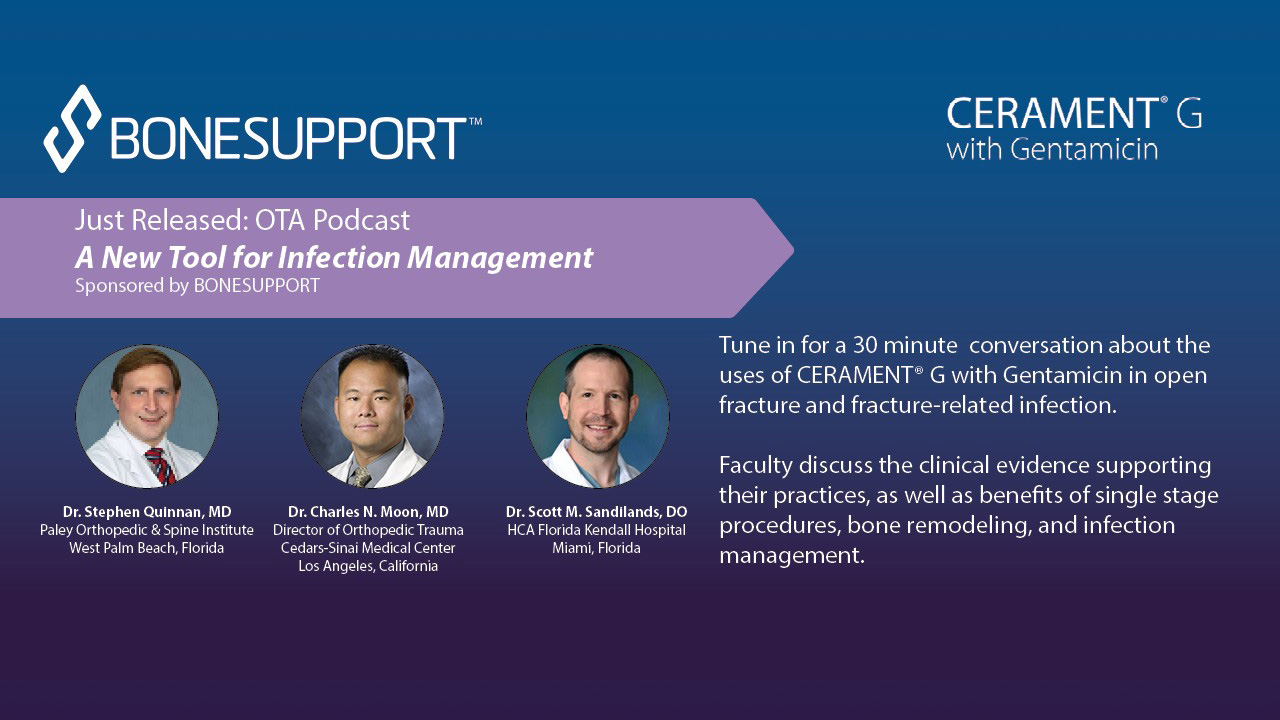Fracture Related Infection
Up to 30% of fractures become infected (Baertl et al. 2021) and despite advances in treatment 62% of patients have 2 or 3 surgeries (Bezstarosti et al. 2019) and the failure rate following surgery is reported to be between 13-39% (Obremskey et al. 2017, Yong et al. 2022 and McNally et al. 2022).
Whether retaining or removing metalwork in a fracture-related infection, CERAMENT G offers a user and patient-friendly solution for managing dead space, with proven results. Please have a look at our materials below on how to use antibiotic-eluting CERAMENT for best outcomes, example cases and clinical results.
Intramedullary Nailing with an Absorbable Antibiotic Carrier (Inaac): A Simple Technique Using Standard Implants
RESULTS:
- 3% infection free (21/23 patients)
- 7% achieved union (18/21patients)
- No complications related to technique
Augmented Debridement for Implant-Related Chronic Osteomyelitis with an Absorbable, Gentamicin Loaded Calcium Sulfate/Hydroxyapatite Biocomposite
RESULTS:
- 52 Patients
- No Fractures
- 92.3% infection eradication
- 81.9% infected non-unions healed
- “Bone remodeling in all patients”
Treatment of Fracture-Related Infection of the Lower Extremity with Antibiotic-Eluting Ceramic Bone Substitutes: Case Series of 35 Patients and Literature Review.
RESULTS:
- 35 patients
- No fractures
- 91.4% infection eradication
Hear From the Experts
Research & Related Videos
OTA Podcast: Bone Infection Management Tools You Should Know
Scott M. Sandilands, DO moderates a conversation about the uses of CERAMENT G in open fractures and fracture-related infections with Peter Everson, MD and Augustine Saiz, MD.
The conversation highlights the 2-CAN technique for IM nailing, where CERAMENT G is delivered alongside intramedullary fixation to provide both structural stability and targeted local antibiotic delivery.
OTA Podcast: A New Tool for Infection Management
Stephen Quinnan, MD moderates a conversation about the uses of CERAMENT G in open fractures and fracture-related infections with Charles N. Moon, MD and Scott M. Sandilands, DO. In it, they not only discuss the clinical evidence supporting their practices, but benefits of single stage procedures, bone remodeling, and infection management.


